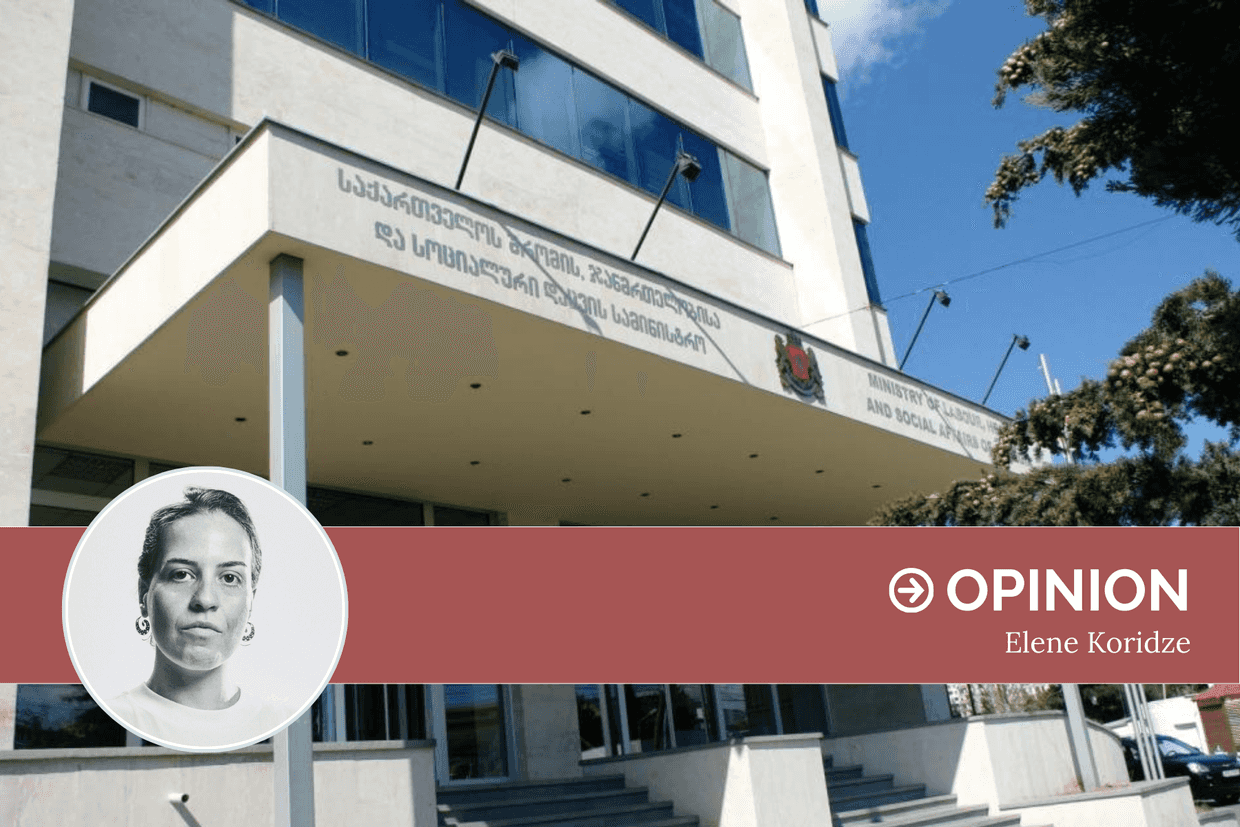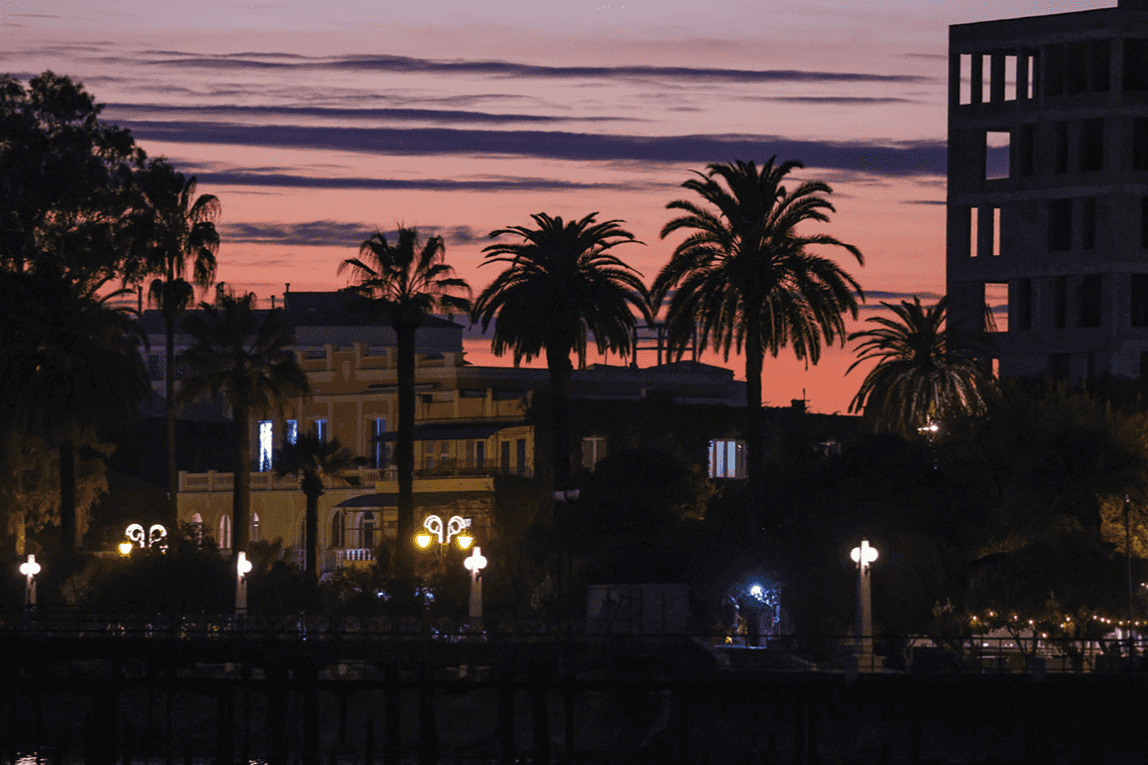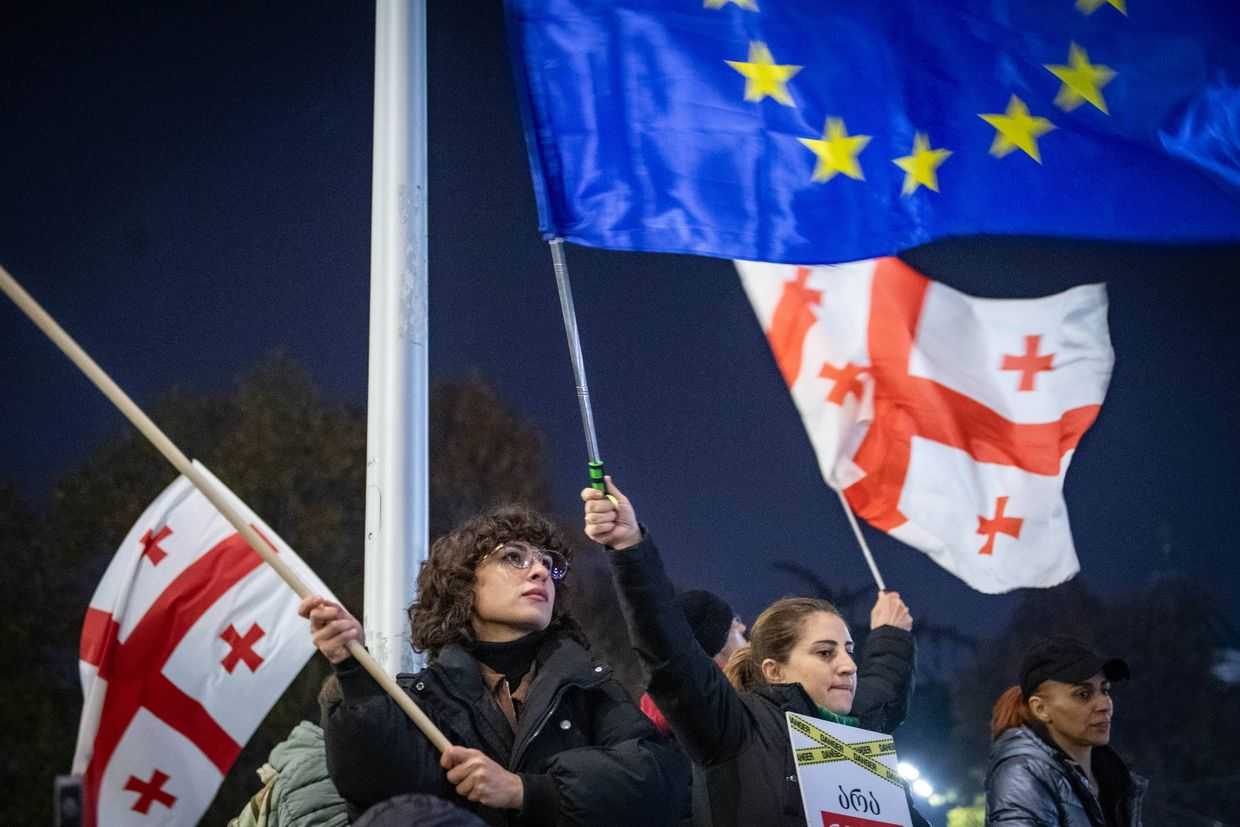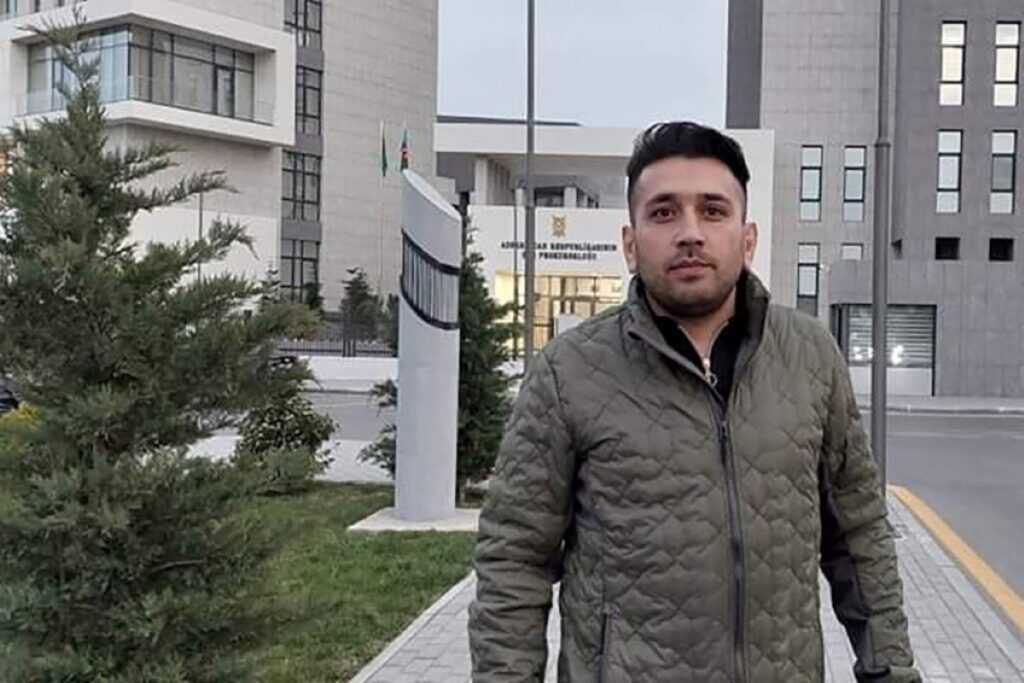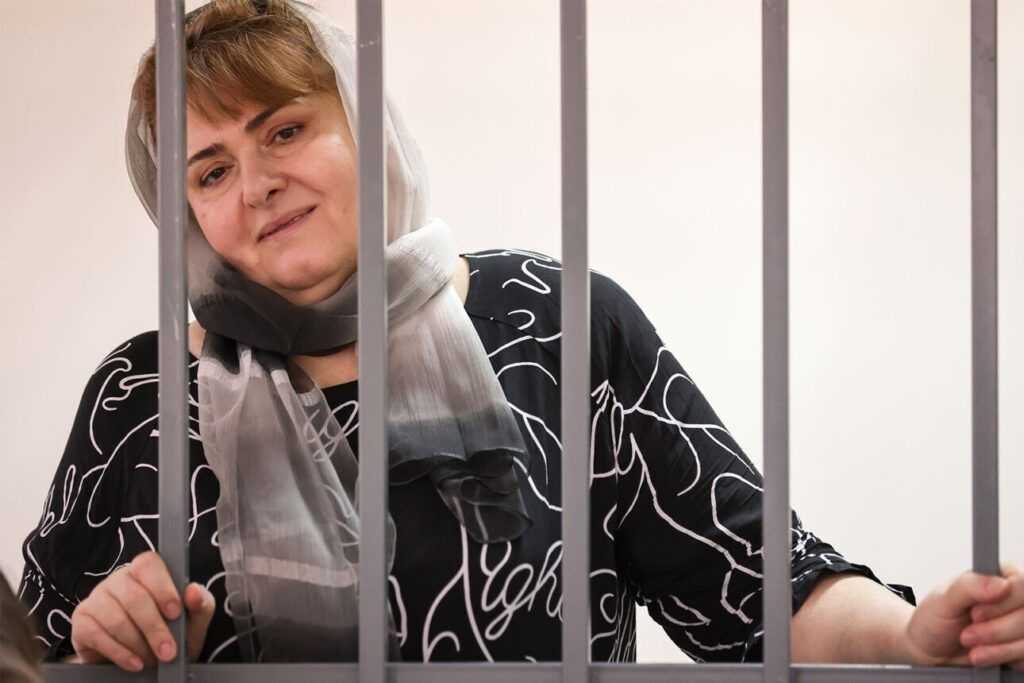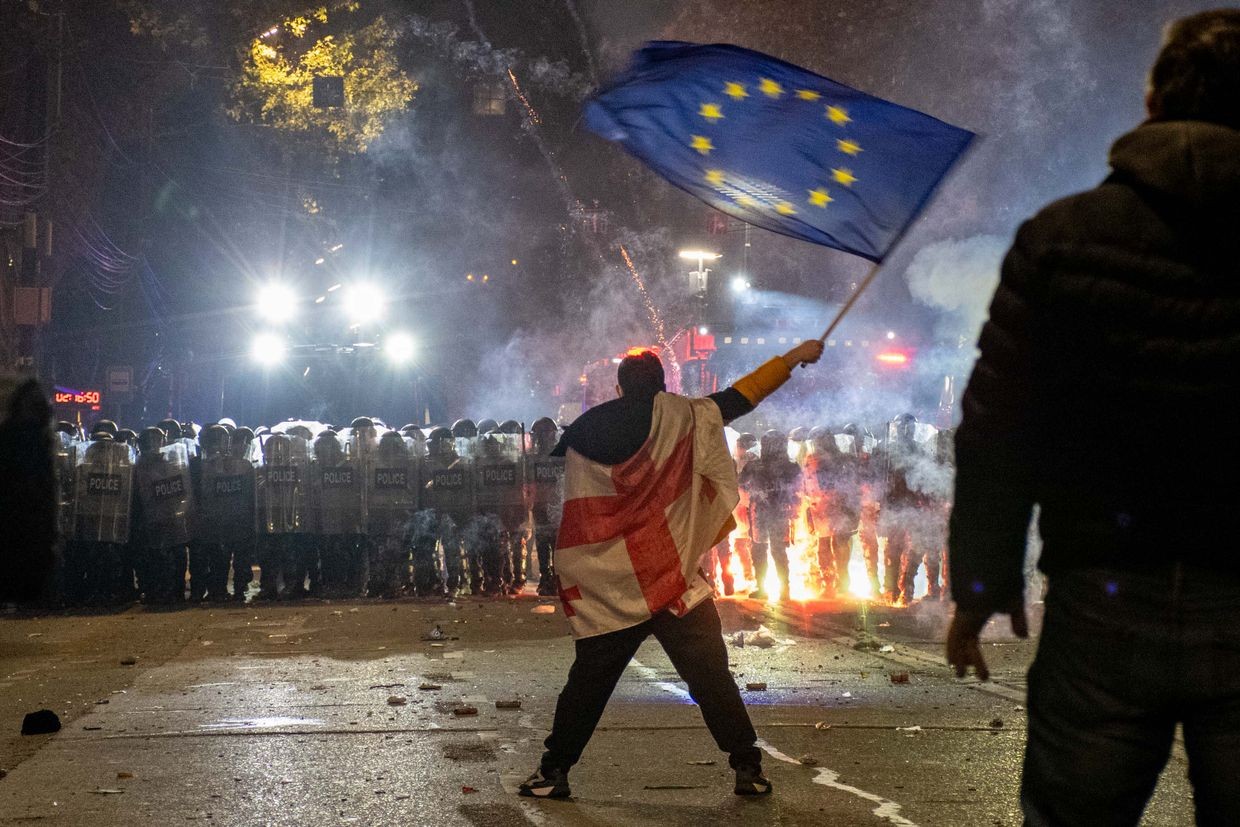
The World Press Photo Foundation has come under fire after awarding a photographer from the Russian state-run media agency, TASS, for his coverage of Georgia’s anti-government protests.
Mikhail Tereshchenko’s winning photo series was taken during the ongoing protests in Georgia — which were sparked by a perceived foreign policy shift by the Georgian Government away from the West and towards Russia.
Founded in 1955, the Dutch-based foundation holds an annual photo contest for press photography that is widely recognised globally.
On 27 March, the jury awarded one of the 2025 prizes to Tereshchenko, stating that they felt it was ‘an important global story documenting mass anti-government protests in Georgia set against the backdrop of contested elections, escalating tensions between pro-Russian and pro-EU politicians, and the reintroduction of the “foreign agents” draft bill’.
‘The nighttime images highlight the use of fireworks as a new urban weapon and capture the dynamics of mass protests, raising questions about how democratic movements worldwide respond to increasingly militarised police forces’, the jury’s statement read.
TASS, which is wholly owned by the Russian government, has been widely documented as spreading misinformation and pushing Russian government talking points.
Shortly after the news broke that Tereshchenko had won the prize, the foundation’s social media accounts were flooded with negative reactions.
On 29 March, a group of Georgian photojournalists and documentary photographers issued a joint statement, declaring that they were ‘deeply disturbed and outraged’ by the foundation’s decision to award a prize to ‘a representative of the Russian state propaganda agency, TASS, for a photo story documenting the Georgian protests — demonstrations explicitly against Russian influence and occupation in Georgia’.
‘Awarding a photographer aligned with the Kremlin’s narrative for covering anti-Russian demonstrations is not only deeply contradictory but also a direct insult to those risking their lives to oppose Russian interference in Georgia’s sovereignty and future’, the statement read.
‘The protesters in the awarded series stand against the forces TASS consistently defends. To have their story narrated through an agency complicit in their oppression is not just contradictory — it is a betrayal of fundamental journalistic principles’, the statement continued.
The statement emphasised that by awarding Tereshchenko, the World Press Photo Foundation was undermining independent media while amplifying propaganda, thereby allowing ‘false narratives to gain broader acceptance’.
‘To be absolutely clear, the story of Georgia’s resistance, suffering, and hope should never be conveyed through the lens of its colonisers’ propaganda news agencies — by those who seek to distort, manipulate, and silence it to serve oppression’, the statement concluded.
Controversy deepens as details of Tereshchenko’s past work in Ukraine is revealed
The backlash against the award was further inflamed after details of Tereshchenko’s past work covering Russia’s full-scale war in Ukraine emerged.
In an interview with TASS published on 27 March, Tereshchenko said he had previously submitted photos to the World Press Photo Foundation of the ‘liberation of Mariupol’, referring to the Russian army’s brutal assault on the southern Ukrainian city in 2022. While the true civilian death toll of the months-long siege remains unknown, as the city is still under Russian occupation, it was likely one of the deadliest episodes of the war.
According to Tereshchenko, the photos were taken ‘during the active phase of the liberation of the city of a million people, the soldiers were advancing, and we journalists were advancing along with them’.
In addition to the factual error — Mariupol’s population was roughly 425,000 before Russia’s siege of the city, which also resulted in its virtual destruction — Tereshchenko’s usage of the term ‘liberation’ was widely condemned across Ukrainian media and beyond. The majority of the city’s inhabitants were either killed or fled, and current estimates of the population are around 120,000.
But the controversy did not end with Tereshchenko’s inclusion — the World Press Photo Foundation incurred additional ire after displaying two other award-winning photos, one of a Ukrainian child traumatised by war, and the other of a wounded Russian soldier, side by side. The seeming equivalence of the two images drew criticism from the Ukrainian government and other bodies.
The World Press Photo’s decision to create a "tandem" of two photos depicting a Ukrainian child traumatized by war and a soldier of Russian invading army is pathetic.
— Heorhii Tykhyi (@SpoxUkraineMFA) March 28, 2025
This is the worst example of a false moral equivalence between an aggressor and one who defends against… pic.twitter.com/qHLpa2mJNq
The foundation responds to criticism
The World Press Photo Foundation has defended the decision to award Tereshchenko.
In an initial statement responding to the backlash, they insisted they were taking complaints about the ‘journalistic professionalism and independence of Mikhail Tereshchenko seriously’. However, they said until a review was complete, they would continue to stand by the jury’s decision. They also encouraged people ‘to view this work for themselves’.
Responding to criticism that the competition allows photographers working for state media to enter, the foundation stated that ‘while recognising the realities of state propaganda, we believe even photographers working in places with little press freedom can create meaningful work’. They added that they ‘believe in supporting photojournalists and documentary photographers living and working in places with limited press freedoms. This is a challenge in too many countries, including Russia’.
In a follow-up statement on 1 April, the foundation again emphasised that despite the criticism, ‘the uncomfortable fact is that the awarded project was selected for its own merits — regardless of the identity of the photographer or their employer (which are not shared with the jury), or the views of the photographer’.
In response to a question of whether or not the organisation agreed with Tereshchenko’s use of the term ‘liberation of Mariupol’, the statement said, ‘no, we do not’.
The organisation also acknowledged that ‘Russian bombardment devastated Mariupol, and included civilian targets such as a maternity hospital and a theater where people were sheltering’.
While noting that they would look into improving the rules and procedures for dealing with entries from photographers working for state controlled agencies, the foundation stood by their decision not to revoke the award.
‘I hear those saying World Press Photo should reverse the jury’s decision, and it is true that we make a choice not to do so. However, if we disregard or retroactively change our rules in this case, what do we do for the next case or the one after that?’, the Executive Director, Joumana El Zein Khoury said.




